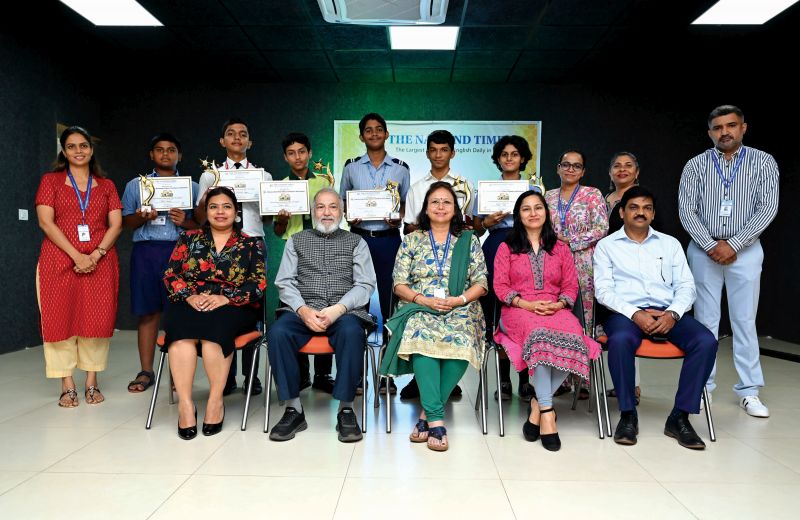
As part of the ecosystem, wildlife provides balance and stability to nature’s processes. From the mighty elephant to the tiny ant, the huge variety of animals contributes to our lives and well-being in more ways than we think. We need wildlife for our survival, well-being and prosperity. Director of the Centre for Wildlife Studies, Bangalore, Dr. Ullas Karanth was the guest on The Navhind Times’ Talk from the Heart show which aired on Sunday, March 27 on the Goa 365 channel. Karanth, who was the Country Director of the Wildlife Conservation Society, was elected a Fellow of the Indian Academy of Sciences and has won many accolades which include the World Wildlife Fund’s J. Paul Getty award. He was also conferred the Padmashri by the President of India.
Speaking about India”s forest cover, Karanth said, “Due to our geographical location, soil and climate, we have different types of forests. Even though a large portion has given way to human activities, we still have about 20% of the area legally classified as forests and 10% is in some form of forests,” he explained. With booming population and increased land going under the plough, ecological disruption is very evident. The Javan rhino, cheetah and Sumatran rhino, are some of the species which are sadly extinct. “The brown-antlered deer and the great Indian bustard are nearly on the brink of extinction,” he stressed and the key, he said, to prevent these from extinction is to demark protected areas.
This however can pose a problem as with rapid economic growth and plans to improve infrastructure; highways, dams and other constructions are cutting through the wildlife areas. Putting human needs and convenience ahead of the natural world is the norm. So, how can more area be taken for protecting nature, is an argument that is often heard. “The total area of our country is 3.2 miillion square kilometres and the area set aside for wildlife sanctuaries and national parks is barely 5%. Hence it is wrong for us to say that wildlife is taking too much space and depriving us of our livelihood,” he emphasised. “We have used the balance 95% at our will and even this attempt at protecting our wildlife has only been in the last 30 to 40 years. Hence it is not a question of choosing wildlife versus human, it is a false dichotomy.“
In his view, Karanth said, at least 10% of the area should be given for wildlife. “Hunting and agriculture are the two main activities that have caused the shrinkage of natural habitats and animal populations. So these two pressures have to be removed and a way to do so is to make agriculture more efficient,” he recommended. The second method he suggested was demographic transition from rural to urban areas. Giving both the pros and cons of this move, he drove his point home that we have to make more room for our wildlife. He also spoke about the CAMPA policy of the government that encourages people to move out of wildlife reserves and promotes afforestation.
Karanth has been advocating afforestation and wildlife conservation since a long time and has spent nearly half a century working to protect the country”s endangered tiger. Explaining how the tigers and other large animals of prey, influence the natural habitat, he said, “Large predatory carnivores rest on the pyramid of other prey species and the prey itself depends on a variety of habitats. Hence if there is a viable population of about 100 tigers conserved, it automatically ensures thousands of square kilometres of forests that harbour various species of animals and birds. But if you start with a frog then you will only get a small piece of forest.“
With the global interest in tigers and the fundraising on their behalf, large sums have been coming in however much of that money gets spent on bureaucracy and infrastructure and other things. “International funding has never been core to India’s wildlife recovery,” corrected Karanth, “It is our tax payer’s money that has gone in and government expenditure has far outweighed international funding for wildlife conservation.” He did however agree that the money is not being used in focussed and wise manner. Recommending a way around this situation, he said, “In my opinion, excessive funding of the same areas rather than spreading the funding to rebuild newer areas as well as critical funding for incentivised demographic transition will definitely help.“



